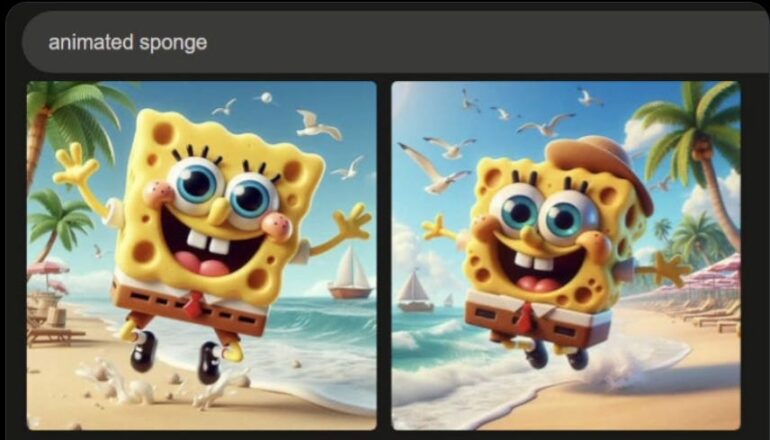TL;DR:
- Generative AI models can recreate trademarked characters with minimal prompts.
- AI researcher Gary Marcus and artist Reid Southen conducted a two-week investigation.
- Visual AI models, Midjourney and Dall-E 3 produce remarkably accurate images even with brief, indirect prompts.
- Examples include generating Mario from “videogame Italian” and SpongeBob from “animated sponge.”
- Concerns about the potential for plagiarism and copyright infringement of generative AI models are rising.
- AI models remain enigmatic “black boxes,” making it challenging to predict when they’ll generate plagiaristic content.
- Users struggle to verify copyright infringement in AI-generated output.
- The authors suggest removing copyrighted content from training data and improving transparency in AI model processes.
Main AI News:
In the realm of generative AI, a concerning trend has emerged, one that could potentially give rise to copyright disputes at an unprecedented scale. With the advent of advanced AI models, creating replicas of trademarked characters has become as effortless as issuing a seemingly innocuous prompt, such as ‘videogame Italian.’
Imagine, for instance, inputting the two-word directive “videogame Italian” into OpenAI’s Dall-E 3, only to witness it conjure up unmistakable depictions of Mario, the beloved protagonist from Nintendo’s iconic franchise. Similarly, the simple phrase “animated sponge” yields crystal-clear renditions of the indomitable SpongeBob SquarePants.
These revelations stem from a comprehensive two-week investigation conducted by AI researcher Gary Marcus and digital artist Reid Southen. Their findings underscore the alarming capacity of AI models to generate “near replicas of trademarked characters” with minimal textual input.
Marcus and Southen subjected two prominent visual AI models, Midjourney and Dall-E 3, to rigorous testing. Astonishingly, both proved adept at crafting highly accurate visual representations from movies and video games, even when provided with concise and indirect prompts, as detailed in a report featured in IEEE Spectrum.
For instance, the duo fed Midjourney with the prompt “popular 90s animated cartoon with yellow skin,” and it promptly generated recognizable images of characters from “The Simpsons.” Simultaneously, the directive “black armor with light sword” resulted in striking resemblances to figures from the Star Wars franchise.
Throughout their investigative journey, Marcus and Southen unearthed a multitude of instances where AI models effortlessly reproduced iconic animated and human characters from the realms of film and gaming.
This investigation unfolds against a backdrop of mounting concerns regarding the propensity of generative AI models for plagiarism. A recent lawsuit filed by The New York Times against OpenAI alleges that GPT-4 duplicated sections of New York Times articles with an alarming degree of fidelity.
The crux of the issue lies in the fact that generative models remain enigmatic “black boxes” where the connection between inputs and outputs remains elusive to end users. Consequently, as per the authors’ report, predicting when a model might generate a plagiaristic response remains a formidable challenge.
For users, this poses a significant dilemma; if they fail to immediately recognize a trademarked image in the AI’s output, they are left without the means to verify potential copyright infringement. This predicament, the authors argue, underscores the urgent need for transparency.
“In a generative AI system, the invited inference is that the creation is original artwork that the user is free to use. No manifest of how the artwork was created is supplied,” they lament. In contrast, when someone sources an image through a Google search, they possess a wealth of resources to discern its origin and ascertain its usage rights.
At present, the responsibility of averting copyright infringement primarily rests on artists and image owners. Dall-E 3 does offer an opt-out process, but it’s deemed so cumbersome that one artist labeled it “enraging.” Furthermore, visual artists have initiated legal proceedings against Midjourney for alleged copyright violations.
To mitigate these issues, the authors advocate for AI models to purge copyrighted material from their training data, filter out potentially problematic queries, or disclose the sources utilized in generating images. Their overarching recommendation is that AI models should exclusively draw upon properly licensed training data until a more comprehensive solution emerges to trace image origins and identify copyright violations. In doing so, they hope to usher in an era of ethical AI creativity that respects intellectual property rights.
Conclusion:
The rapid capability of AI models to recreate trademarked characters poses a significant challenge to the market, particularly in the realms of copyright protection and intellectual property rights. Businesses and content creators must adapt by implementing stricter licensing and transparency measures to navigate this emerging landscape successfully.

